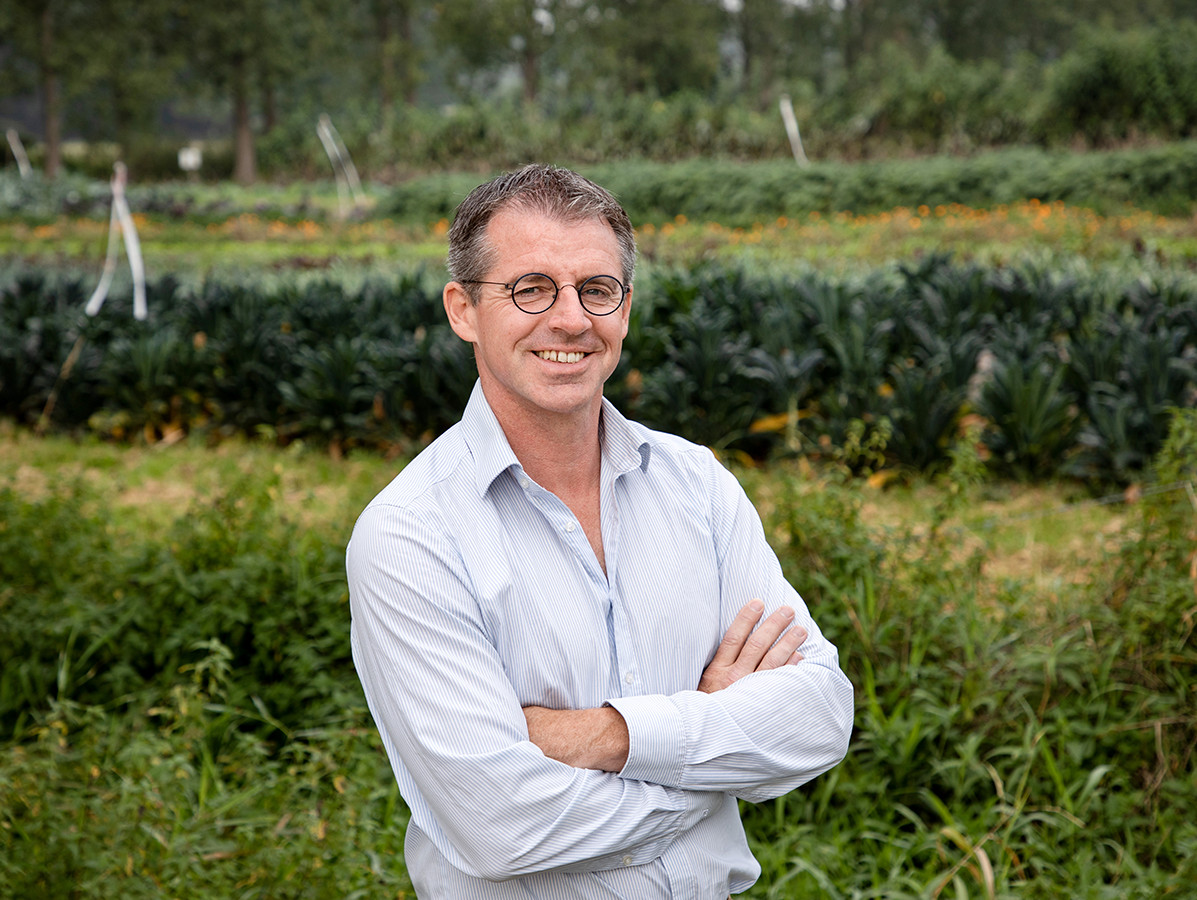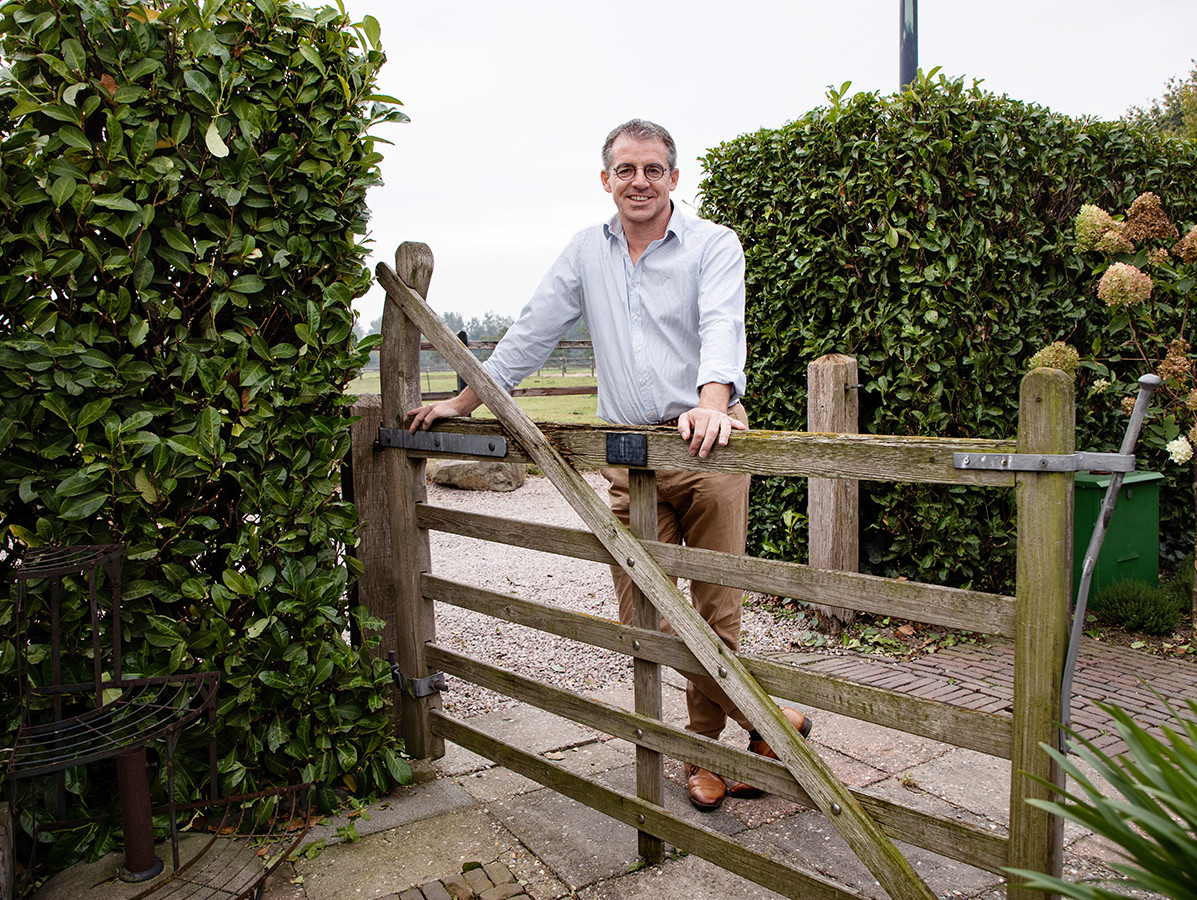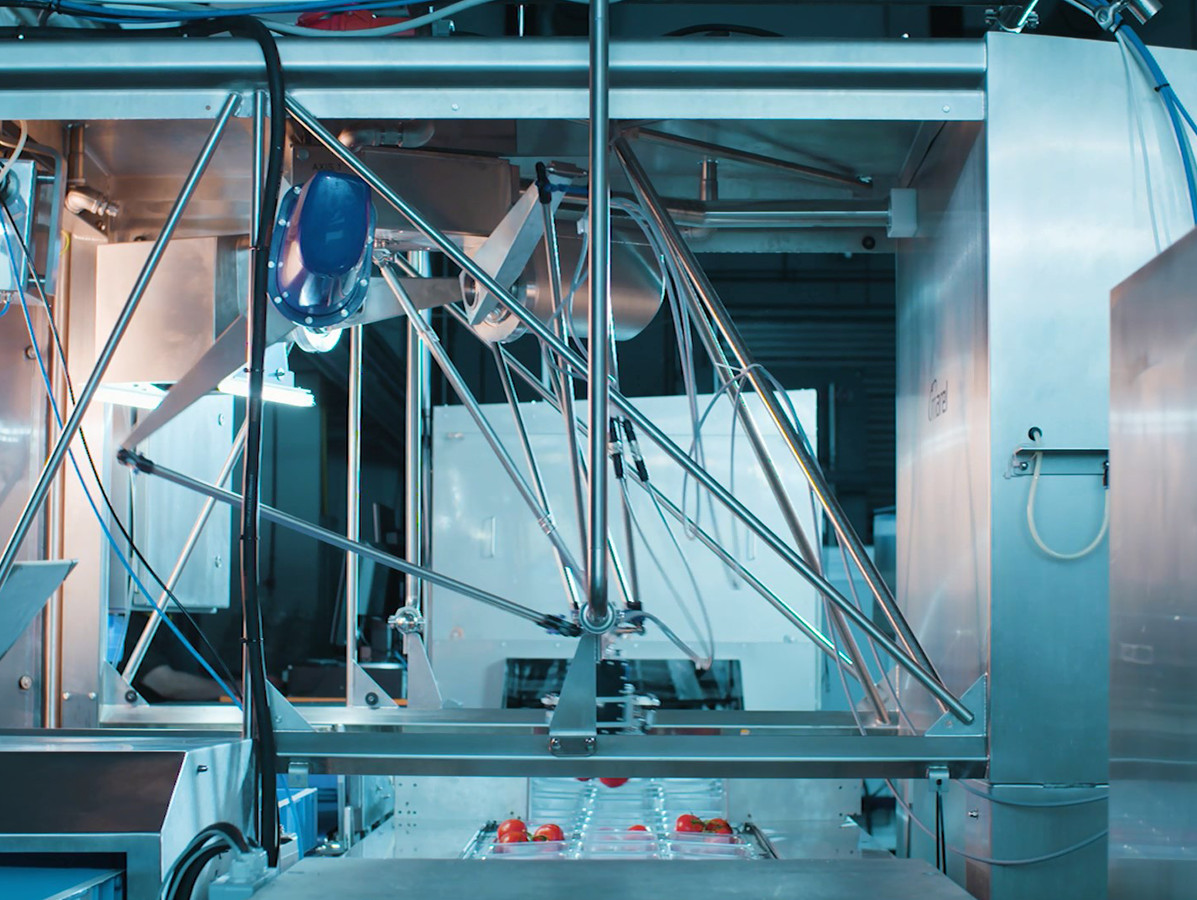
If it were up to Erik Pekkeriet, human hands would make way for robots as much as possible in the production process. It can provide manufacturers with flexibility and leads to fresher and more sustainable food.
According to Erik Pekkeriet, the generally prevailing image that the agro sector is far ahead of the food processing industry in terms of robotisation, needs to be nuanced. After all: "On agricultural land, a farmer still drives a tractor. And the use of robots in the food industry seems to be going well. However, there is a big difference between fresh and processed food. After all, a robot is less able to cope with the variable properties of fresh food. Hagelslag is easier to pack in a package and then in a box, than different sizes, shapes and weights of cucumbers that first go into plastic and then have to fill a crate as efficiently as possible. After all, stocking remains an extremely crucial factor in this sector".
As programme manager Agro Food Robotics at the WUR, Pekkeriet knows the developments in the field of robotisation in the food sector like no other. With a large dose of knowledge and occasionally a stimulating proposition to the industry, he talks to us about necessity, possibilities and his dreamscape.
"At the moment, one-off robotics are mainly used in this sector, especially by SMEs. But they are not very flexible; they cannot be used generically. Robots need to be able to change quickly for large volumes, because suppliers supply their products in a different way and customers all have their own requirements: some want two chicken fillets in a tray, others want four, and another wants organic chicken which means that the packaging needs to be adjusted accordingly. Scaling up is especially necessary when processing seasonal products or in retail promotions. At such peak times, it is now easier for manufacturers to deploy extra staff".
"Working conditions in the primary process where every product is touched are not getting any better. Factories are becoming noisier and productivity must be constantly increasing. Production, for example, is increasingly taking place 24/7. In addition, the climatic conditions are poor: production areas are often between four and seven degrees Celsius because fresh products are used. This is better for general food safety, but not beneficial for the well-being of employees. These are mostly migrant workers, and as a result the deteriorating working conditions are less visible. But it is a major issue that we should be concerned about.

"Everywhere human hands are involved, there is a risk of contamination. You reduce it if you let robots take over labour. So it benefits food safety. In addition, robots can work faster and thus shorten the production chain, because organisational and logistical steps can be skipped. Tracking and tracing is automatically included in well robotised systems. This increases the transparency of the chain. In addition, food can be processed more freshly and no longer needs to be frozen. It costs less energy in the production process, storage, transport and at the consumer's home because they do not have to have it defrosted. Robot lines can also work more compactly, so that food can be processed closer to where it was harvested, caught or slaughtered. All these reasons also lead to financial benefits for the industry".
"First of all, robots can pick products directly from the crate - also known as bin picking. Now, the system is often set up in such a way that a crate that comes off the pallet is flipped over on a conveyor belt. This belt shakes a little and pulls the products apart. Perhaps a robot uses a camera to collect some products, but only things he finds easy. The rest of the selection often takes place manually or in a return flow, whereupon the robot is allowed to make a second attempt. This often increases the risk of contamination. The line in between also needs to be cleaned to reduce the risk of contamination. In bin picking only the gripper and crate need to be cleaned - food-contact parts. This cleaning process should also be carried out by robots. When a production line is roofed over, they can clean the line inside-out so that no water, detergent or human hands are involved. Finally, robots can significantly improve operational flexibility. Techniques used are wheel in/wheel out, modules that are easy to place in and out of a line and/or to drive, plug & play, modular use of robots and adaptive software. The latter technique works in the same way as a new USB device on a computer: it logs on, the computer finds the driver and moves on. This allows manufacturers to switch production more quickly and does not require expensive OEMs (Original Equipment Manufacturers, ed.)".
"Yes - the best-before date that we give fresh products is now fixed in production. This means that all tomatoes from one harvest will have the same best-before date. While the taste of the individual tomatoes can still vary and change. Sensors allow us to measure, among other things, the exact ripeness and sugar content of the individual tomatoes. These data can be used to adjust the best-before dates for each tomato. The sensors thus provide more flexibility and product diversification. These kinds of techniques are available, but the sector is hesitant".

Pekkeriet is quiet for a moment. Then, after a slight sigh: "Short-term contracts between retail and suppliers have to go, so that suppliers can invest in long-term solutions. The robots that are now being used - the one-off's - are not sufficiently oriented towards operational flexibility. Many food companies that potentially benefit from flexible robots are reluctant to invest in R&D because the processes in front of and behind the robot also need to be modified; including the sorting and packaging system. Short-term contracts with retailers, for example, and the fact that they constantly demand modifications, mean that products and packaging have to be changed all the time. This requires learning systems: robots that collect data and convert it into actions. The chain partners have to work together to make this possible".
"I would be delighted if there were to be fully automated food production. I am hoping for a food processing industry where fresh produce is selected from pallets by robots and enters a tunnel where it is fully processed. Meanwhile, robots are at work collecting all kinds of data. Then the best-before date can be determined for each product and products can be packed in such a way that the load factor is still optimal. What's more, we eat more sustainably, fresher and healthier. And our food is produced more decentralized, meaning that it is consumed closer to the origin of the main raw materials. To achieve this, however, science needs more help from the industry. That has a rather conservative business model; the industry's view should be more long-term".
Erik Pekkeriet
Erik Pekkeriet (1970) studied work-related engineering and created the basis for a career in the agri-food sector. He worked as a project assistant in maintenance management at Philips and as a consultant in innovation management in greenhouse horticulture. He then moved on to Wageningen University & Research, where he worked on broadening the scope from robotisation in greenhouse horticulture to robotisation in open field, fish, livestock, food and other fields in agrifood. Currently, within the WUR, he leads the agile team of Agro Food Robotics of forty researchers working on robotisation in various branches of the food chain. He is also the founder and network coordinator of agROBOfood, the European Digital Innovation Hub Network for agrifood robotics.
Photos: © Herbert Wiggerman
Source: Vakblad Voedingsindustrie 2020